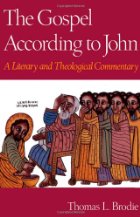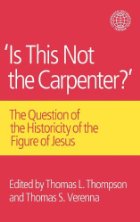 Read almost any commentary on the Gospel of John and one learns that the conventional wisdom is that this Gospel is littered with sure signs that it has been pieced together over time by several authors, revisers or editors. One of the most obvious indicators of this strikes most readers when they read the speeches of Jesus at the Last Supper. He interrupts himself to say, “Arise, let us go from here”, but instead of going anywhere he merely continues with another lengthy monologue. “No doubt” we are reading the results of clumsy editing.
Read almost any commentary on the Gospel of John and one learns that the conventional wisdom is that this Gospel is littered with sure signs that it has been pieced together over time by several authors, revisers or editors. One of the most obvious indicators of this strikes most readers when they read the speeches of Jesus at the Last Supper. He interrupts himself to say, “Arise, let us go from here”, but instead of going anywhere he merely continues with another lengthy monologue. “No doubt” we are reading the results of clumsy editing.
Look at the exchange between Nicodemus and Jesus. Surely here we see another indication of an editor clumsily stitching a speech about being born again into pre-existing scene between Jesus and the Pharisee. Nicodemus starts the conversation easily enough but then Jesus appears rudely to ignore his words and launches immediately into a jarring proclamation about his need to be born again.
And what are readers to make of that apparently meaningless reference to the time of day — “it was about the tenth hour” — when the first disciples of Jesus are said to go to the place where Jesus was staying?
One moment Jesus is in Jerusalem, and the next, without any explanation, he is suddenly in Galilee again.
Surely only a committee of editors working independently over time could have produced such a disjointed work.
Not so, says Thomas L. Brodie in his 625 page volume, The Gospel According to John: A Literary and Theological Commentary. Continue reading “The Gospel of John as a Unified Work”

